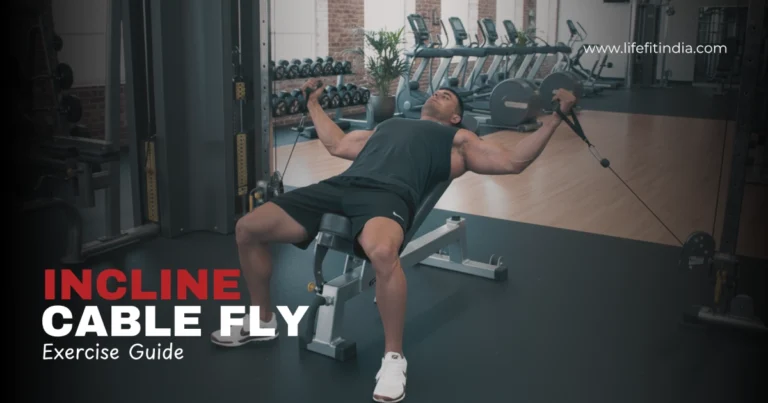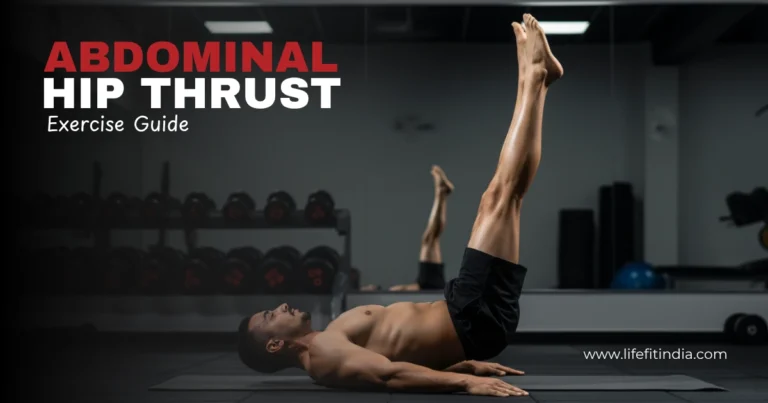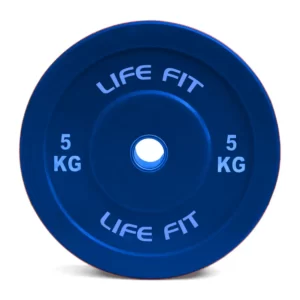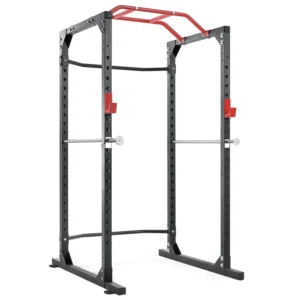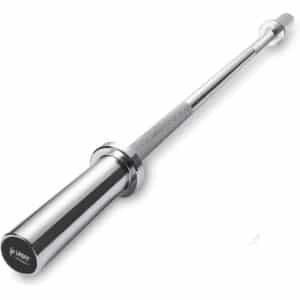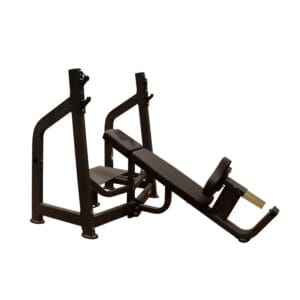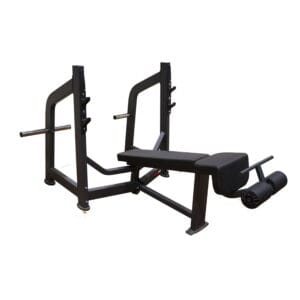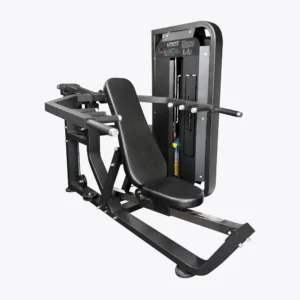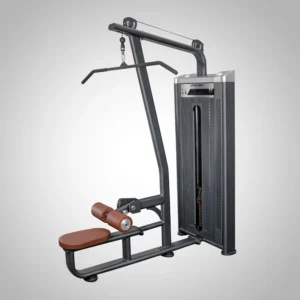Exercise Ball Dumbbell Bench Press: Guide to Core Stability and Strength

The Exercise Ball Dumbbell Bench Press, often referred to as the Stability Ball Dumbbell Press or Swiss Ball Dumbbell Press, is a unique and effective exercise variation. It challenges not only your chest, shoulders, and triceps but also significantly engages your core muscles to maintain balance on an unstable surface. If you are looking to add an exercise that enhances core stability while building upper body strength, this guide will walk you through the proper form, benefits, and tips for incorporating it into your routine. Understanding how to perform this movement correctly is key to maximizing its benefits and ensuring safety, especially when working with a physioball or stability ball.
Muscles Worked
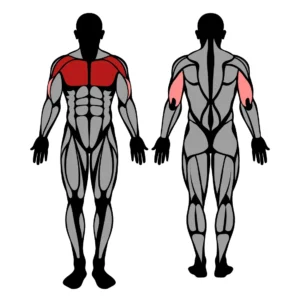
Performing the dumbbell bench press on an exercise ball, stability ball, or Swiss ball engages several muscle groups:
Primary Movers:
- Pectoralis Major (Chest)
- Anterior Deltoids (Front Shoulders)
- Triceps Brachii
Key Stabilizers:
- Core Muscles (Rectus Abdominis, Obliques, Transverse Abdominis)
- Rotator Cuff Muscles (Shoulder Stabilizers)
- Glutes and Legs (for maintaining balance)
Why Choose the Exercise Ball Dumbbell Bench Press?
The main advantage of using an exercise ball for this press is the added challenge to your core and balance systems. Key benefits include:
- Enhanced Core Stability: The unstable surface forces your core muscles to work constantly to keep your torso steady throughout the movement.
- Improved Balance and Coordination: Regularly performing exercises on an unstable surface like a Swiss ball can improve your overall proprioception and balance.
- Increased Stabilizer Muscle Activation: Smaller muscles around the shoulder joint work harder to control the dumbbells independently.
- Functional Strength: This exercise can translate to better stability and strength in activities that require balancing and pushing movements.
For your setup, you will need appropriate dumbbells (Hex Dumbbells are a great option) and a durable exercise ball (also known as a stability ball or Swiss ball). Ensure your workout space is safe, perhaps using a rubber floor mat for extra grip.
How to Perform the Stability Ball Dumbbell Bench Press: Step-by-Step
Following proper form is crucial for safety and effectiveness, especially on an unstable surface like an exercise ball.
- Setup: Sit on the exercise ball holding a dumbbell in each hand, resting them on your thighs. Carefully walk your feet forward, rolling the ball down your back until your upper back and shoulders are comfortably supported on the ball. Your torso should be parallel to the floor, knees bent at 90 degrees, and feet flat on the ground, hip width apart for stability.
- Starting Position: Raise the dumbbells above your chest with your palms facing forward or slightly inward (neutral grip). Your arms should be extended but keep a slight bend in the elbows.
- Lowering Phase (Eccentric): Slowly lower the dumbbells towards the sides of your chest in a controlled arc. Keep your elbows tucked at roughly a 45-60 degree angle relative to your body, not flared out wide. Maintain tension and control throughout the descent. Focus on keeping your hips stable and core engaged to prevent sagging. Lower until your upper arms are about parallel to the floor or you feel a good stretch in your chest.
- Pressing Phase (Concentric): Exhale and forcefully press the dumbbells back up to the starting position, squeezing your chest muscles. Keep the movement controlled, avoiding letting the dumbbells crash together at the top.
- Breathing: Inhale as you lower the dumbbells, exhale as you press them up.
- Repetitions: Perform the desired number of repetitions with consistent form and control.
- Finishing: Carefully lower the dumbbells towards your chest or thighs. Engage your core and use leg drive to roll back up into a seated position on the Swiss ball before setting the weights down.
Video Demonstration
Tips for Proper Form and Safety
- Start Light: Begin with lighter dumbbells than you would use on a flat bench until you master the balance aspect.
- Engage Your Core: Actively brace your core throughout the entire movement. Imagine drawing your belly button towards your spine. This is key for stability.
- Control the Movement: Avoid rushing. Perform both the lowering and pressing phases deliberately.
- Maintain Hip Position: Do not let your hips sag towards the floor. Keep a straight line from your shoulders to your knees.
- Keep Feet Planted: Ensure your feet are firmly on the ground to provide a stable base.
- Shoulder Blade Position: Keep your shoulder blades slightly retracted (pulled back and down) for shoulder stability.
- Focus: Pay close attention to your balance and form throughout the set.
Common Mistakes to Avoid
Watch out for these frequent errors when performing the exercise ball dumbbell press:
- Hip Sagging: Letting the hips drop breaks the stable torso position and reduces core engagement. Fix: Actively squeeze your glutes and brace your core to keep your body parallel to the floor.
- Excessive Elbow Flare: Allowing elbows to flare out to 90 degrees can increase stress on the shoulder joint. Fix: Keep elbows tucked at a 45-60 degree angle relative to your torso.
- Uncontrolled Descent: Lowering the weights too quickly reduces muscle tension and control. Fix: Lower the dumbbells slowly and deliberately (e.g., 2-3 second negative).
- Losing Balance: Rushing or using weights that are too heavy can cause instability. Fix: Prioritize control, use appropriate weight, and ensure feet are well placed.
Variations on the Stability Ball
Once you master the standard version, you might explore variations for different stimuli:
Alternating Exercise Ball Dumbbell Press
Press one dumbbell up while keeping the other stable, then alternate.
- Benefit: This increases the time your muscles are under tension and further challenges core stability and coordination.
Single Arm Exercise Ball Dumbbell Press
Perform the press with only one dumbbell.
- Benefit: This dramatically increases the demand on your core’s anti rotation stability (preventing your torso from twisting) and effectively highlights any strength imbalances between sides.
Programming Considerations
Because balance is a major factor, this exercise is often programmed with moderate weight for slightly higher reps (e.g., 3 sets of 10-15 reps).
It fits well into upper body or push day workouts. People might choose the Swiss ball dumbbell press specifically to enhance core stability, as part of shoulder prehab/rehab routines due to the increased stabilization demand, or as an accessory lift to complement heavier bench pressing.
Listen to your body and prioritize form over heavy weight.
Explore different workout routines for men or general strength training at home to see how it can fit.
Conclusion
The Exercise Ball Dumbbell Bench Press, whether performed on a stability ball or Swiss ball, offers a fantastic way to challenge your upper body pushing muscles while simultaneously demanding significant core engagement.
By focusing on proper form, starting with manageable weights, avoiding common mistakes, and maintaining control, you can safely incorporate this exercise into your routine.
It is a valuable addition for anyone looking to improve core stability, balance, and functional strength alongside traditional chest training like the incline bench press or flat bench dumbbell press.
Ready to enhance your workout? Explore our dumbbells collection and consider adding other versatile pieces from our home gym equipment range.
About Arpan Singh
Arpan Singh is the founder of LIFE FIT and a certified expert in Kinesiology, Anatomy, Biomechanics, Sports Nutrition, and Personal Training, with additional CPR & BLS certification from Apollo. With over 15 years of experience, he writes science-backed fitness content to help individuals train safely and effectively.
View all posts by Arpan SinghRelated posts
Best Equipment for Chest Workout
-
 Multi Adjustable Gym Bench | Bench Press for Home Gym Rated 4.75 out of 5
Multi Adjustable Gym Bench | Bench Press for Home Gym Rated 4.75 out of 5₹34,999Original price was: ₹34,999.₹18,499Current price is: ₹18,499. -
 High-Quality Hex Dumbbells for Strength Training Rated 4.75 out of 5₹899 – ₹4,499Price range: ₹899 through ₹4,499
High-Quality Hex Dumbbells for Strength Training Rated 4.75 out of 5₹899 – ₹4,499Price range: ₹899 through ₹4,499 -
 Rubber Bumper Plates - Pair Rated 4.80 out of 5₹1,799 – ₹8,999Price range: ₹1,799 through ₹8,999
Rubber Bumper Plates - Pair Rated 4.80 out of 5₹1,799 – ₹8,999Price range: ₹1,799 through ₹8,999 -
 LF-R100 Power Rack Rated 5.00 out of 5
LF-R100 Power Rack Rated 5.00 out of 5₹39,999Original price was: ₹39,999.₹27,999Current price is: ₹27,999. -
 Elite Ironworks Olympic Barbell Rated 5.00 out of 5₹2,699 – ₹4,999Price range: ₹2,699 through ₹4,999
Elite Ironworks Olympic Barbell Rated 5.00 out of 5₹2,699 – ₹4,999Price range: ₹2,699 through ₹4,999 -
 Hammer Strength Olympic Flat Bench
Hammer Strength Olympic Flat Bench
₹57,199Original price was: ₹57,199.₹39,999Current price is: ₹39,999. -
 Olympic Incline Bench
Olympic Incline Bench
₹57,199Original price was: ₹57,199.₹39,999Current price is: ₹39,999. -
 Olympic Decline Weight Bench
Olympic Decline Weight Bench
₹57,199Original price was: ₹57,199.₹39,999Current price is: ₹39,999. -
 Assist Dip Chin | LIFE FIT
Assist Dip Chin | LIFE FIT
₹116,665Original price was: ₹116,665.₹69,999Current price is: ₹69,999. -
 Multi Press Machine | Impact Series
Multi Press Machine | Impact Series
₹116,665Original price was: ₹116,665.₹69,999Current price is: ₹69,999. -
 LIFE FIT Pro Lat Pull Down Machine
LIFE FIT Pro Lat Pull Down Machine
₹114,285Original price was: ₹114,285.₹79,999Current price is: ₹79,999.



